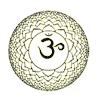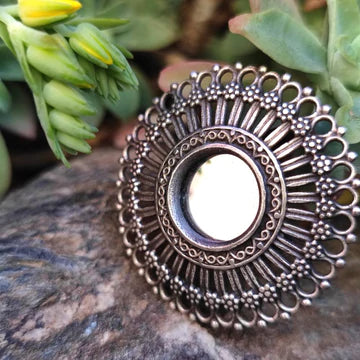Chakras - what are they?
 According to Eastern doctrines, man is a whole: every event that affects one part of him, the body, for example, has repercussions on every other element of his being.
According to Eastern doctrines, man is a whole: every event that affects one part of him, the body, for example, has repercussions on every other element of his being.
This happens because there is something that comes 'before' the body, the tissues, the neurons, the emotions, the thought: something that is the cause, something that is then modulated to create the different parts of the person, the organs, the feelings , and so on.
Like water flowing from the source, energy is something that is located upstream of the great river downstream, composed of body, mind, spirit: the element that permeates every single atom of our being and regulates its functioning.
For this reason, when something alters within us, our whole person suffers the effects: by working on energy with balanced techniques it is possible to bring harmony directly to the causes of these imbalances, receiving benefits in all parts of our being.
The seven chakras
First chakra
 The 7 chakras are arranged at the junction points of three great communication paths: Ida, Pingala and Sushumna, the main channels of acupuncture. Two of these channels develop in a spiral starting from the base of the spine to the top of the head, the third develops in a straight line. At each of the seven points where these channels intersect there is a chakra.
The 7 chakras are arranged at the junction points of three great communication paths: Ida, Pingala and Sushumna, the main channels of acupuncture. Two of these channels develop in a spiral starting from the base of the spine to the top of the head, the third develops in a straight line. At each of the seven points where these channels intersect there is a chakra.
2nd chakra:
III chakra:
 Manipura the third chakraIt is located in the center of the solar plexus; the third chakra is the chakra of will, the fire of determination and constancy, of tenacity. It presides over the functioning of the stomach, pancreas and liver; it is associated with the element fire and the color yellow: intellect and will.
Manipura the third chakraIt is located in the center of the solar plexus; the third chakra is the chakra of will, the fire of determination and constancy, of tenacity. It presides over the functioning of the stomach, pancreas and liver; it is associated with the element fire and the color yellow: intellect and will.
4th chakra:
V chakra:
 Visuddha fifth chakra located in the throat area: the fifth chakra is the chakra of communication and concrete action; presides over the functioning of the thyroid, trachea and larynx; the associated element is air, the color blue and light blue: the color of expression and relationship.
Visuddha fifth chakra located in the throat area: the fifth chakra is the chakra of communication and concrete action; presides over the functioning of the thyroid, trachea and larynx; the associated element is air, the color blue and light blue: the color of expression and relationship.
VI chakra:
VII chakra:
 Sahasrara seventh chakraLocated on the top of the head, it is the highest chakra, the chakra of connection with everything, with the universe, the chakra of achieving enlightenment, understood as self-realization. It is associated with the color white, the light that includes all other colors, with violet and gold; this chakra supervises, together with the sixth, the functioning of the brain and controls the epiphysis. It is the chakra most developed by transcendental meditation.
Sahasrara seventh chakraLocated on the top of the head, it is the highest chakra, the chakra of connection with everything, with the universe, the chakra of achieving enlightenment, understood as self-realization. It is associated with the color white, the light that includes all other colors, with violet and gold; this chakra supervises, together with the sixth, the functioning of the brain and controls the epiphysis. It is the chakra most developed by transcendental meditation.









 Svadhisthana second chakraLocated a few fingers below the navel, the second chakra is the chakra of balance, joy and sadness, emotions and understanding everything. It is connected to the water element; presides over the functioning of the genital organs, the kidneys and the small intestine. The color associated with this chakra is orange: the joy of availability.
Svadhisthana second chakraLocated a few fingers below the navel, the second chakra is the chakra of balance, joy and sadness, emotions and understanding everything. It is connected to the water element; presides over the functioning of the genital organs, the kidneys and the small intestine. The color associated with this chakra is orange: the joy of availability. Anahata fourth chakra is located in the center of the chest; the fourth chakra is the chakra of love towards oneself and others, the chakra of growth and of the most essential part of ourselves. It presides over the functioning of the heart, lungs and thymus; the associated colors are pink and green: love towards oneself and unconditional gift towards others.
Anahata fourth chakra is located in the center of the chest; the fourth chakra is the chakra of love towards oneself and others, the chakra of growth and of the most essential part of ourselves. It presides over the functioning of the heart, lungs and thymus; the associated colors are pink and green: love towards oneself and unconditional gift towards others. Ajna sixth chakra located in the forehead, between the eyebrows, is the chakra of thought and intuition, of vision beyond the pure materiality of things; regulates brain functions, the visual system and the pituitary gland.
Ajna sixth chakra located in the forehead, between the eyebrows, is the chakra of thought and intuition, of vision beyond the pure materiality of things; regulates brain functions, the visual system and the pituitary gland.


